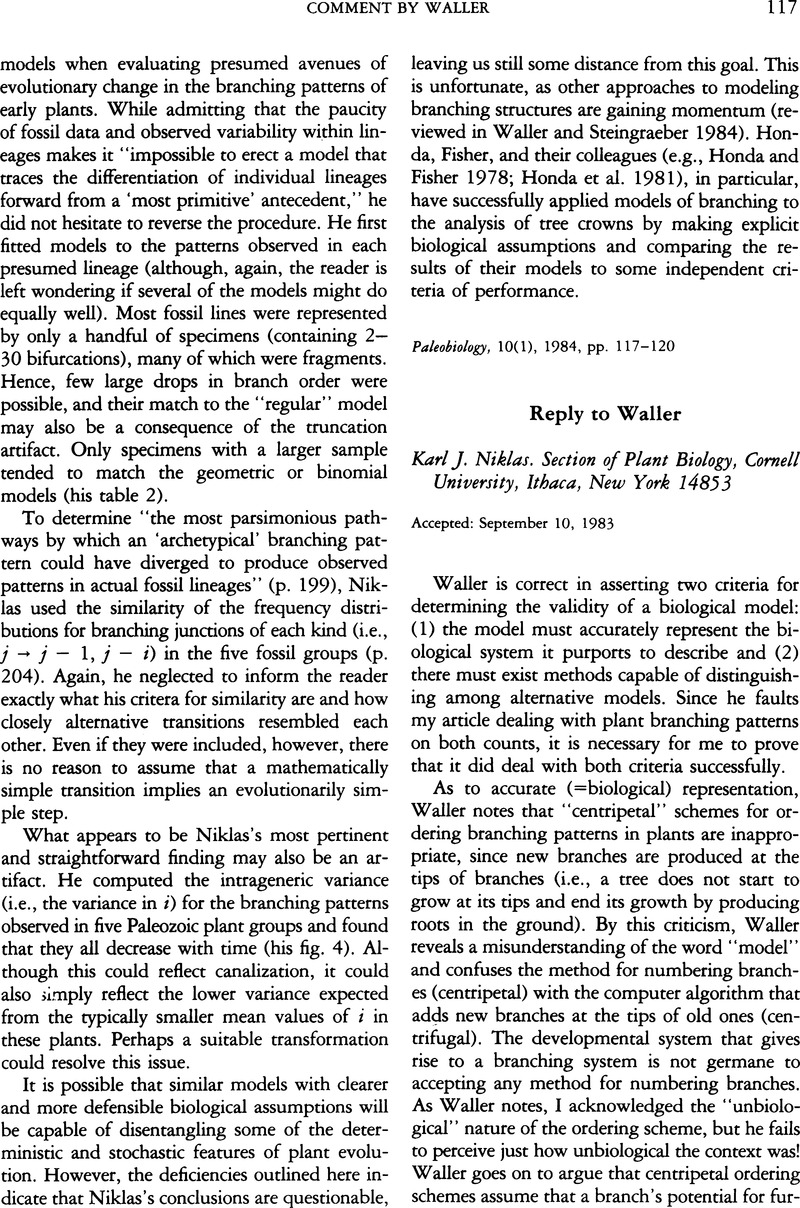Crossref Citations
This article has been cited by the following publications. This list is generated based on data provided by Crossref.
1986.
The simulation of branching patterns in modular organisms.
Philosophical Transactions of the Royal Society of London. B, Biological Sciences,
Vol. 313,
Issue. 1159,
p.
143.



